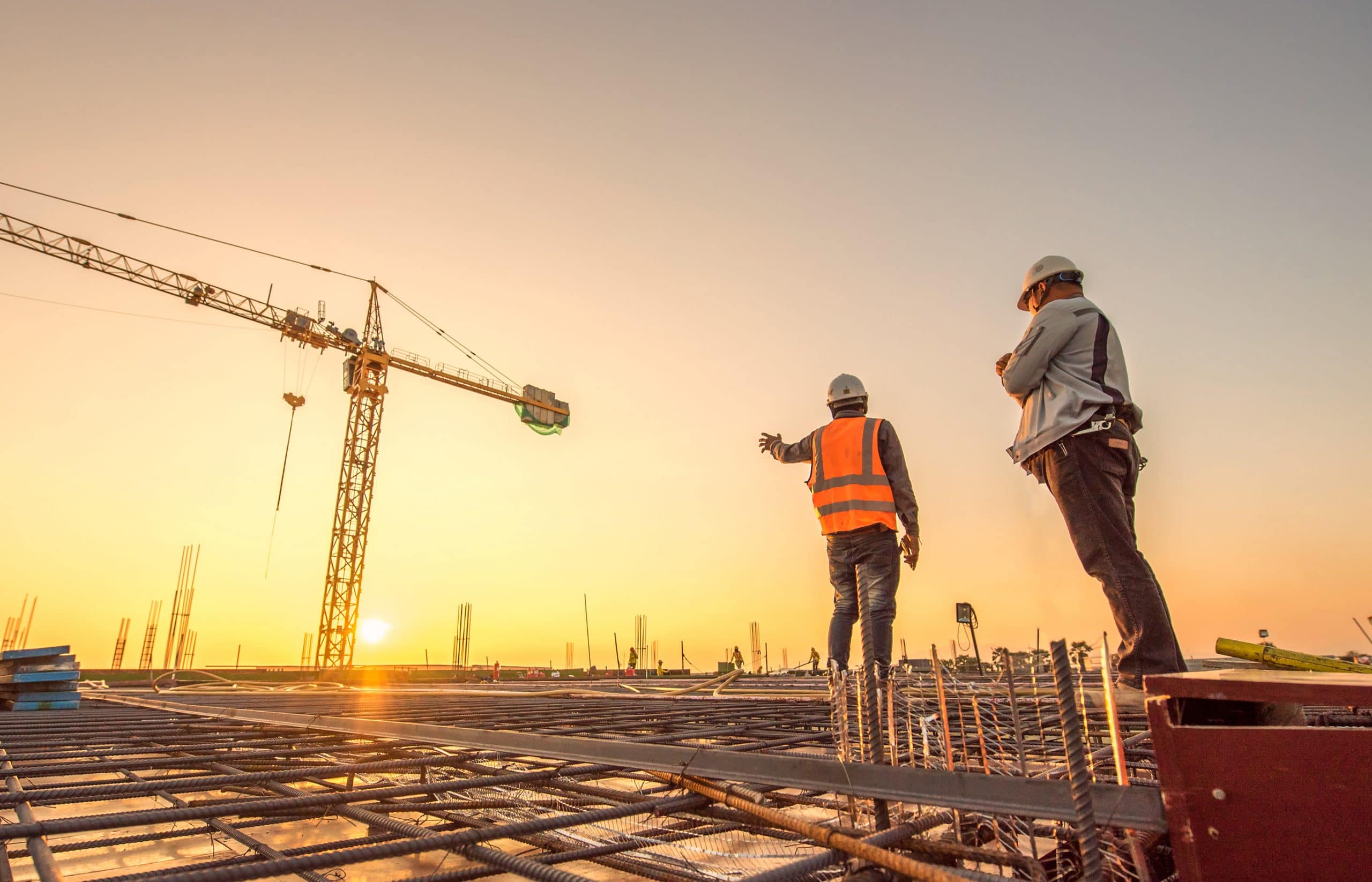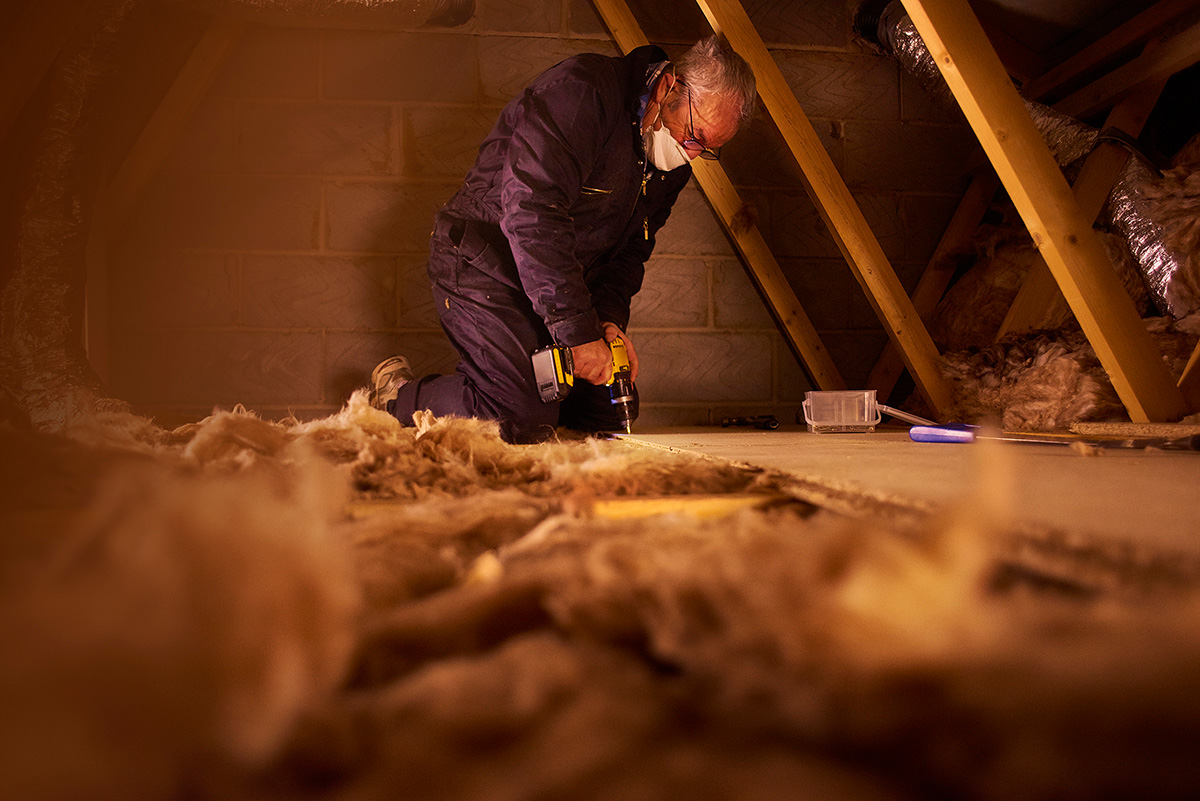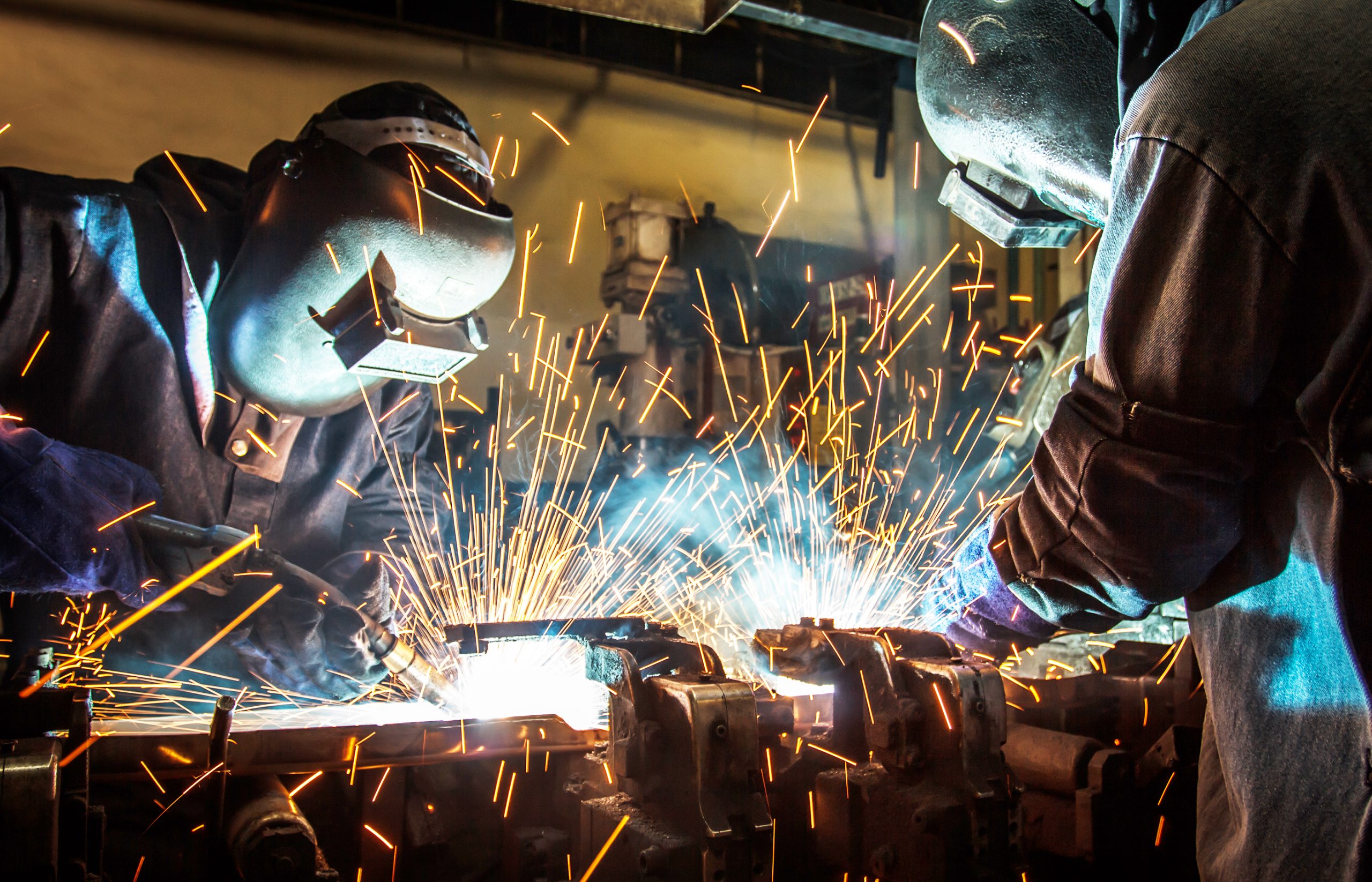The Construction Industry and Asbestos Exposure
Asbestos was once used in the construction of many buildings and structures. If asbestos buildings undergo remodeling or demolition projects, nearby workers may have been exposed.

Construction Workers and Asbestos
There are multiple industries at risk for dangerous exposure to a carcinogenic (i.e., cancer-causing) mineral known as asbestos, and the construction industry is one of them. The ore was used mostly in many building projects since the early 1900s (before it was classified as dangerous). This was because of how resilient asbestos was against the elements. Especially fire and electrical heat.
Workers are likely to encounter the toxin in a variety of building materials like coatings, friction products, gaskets, heat-resistant fabrics, and packaging. When asbestos is inhaled or taken home on clothing from work, workers and their families run the risk of contracting mesothelioma, the deadly disease with a high mortality rate.
Asbestos Risks for Construction Workers
Construction workers must be wary of encountering harmful substances in their line of work especially those in jobs pre-1982. This is largely because asbestos is most dangerous when it’s friable or in a crumbled, powdery state that generally occurs during construction, renovation, and demolition projects. When it’s in this form, the toxic, spindly fibers are expelled into the air and more easily swallowed by employees or residents nearby.
The mineral can be found embedded in the following structures:
- Areas around wood-burning stoves (walls, floors)
- Attic and wall insulation
- Clutches and brakes (automobiles, aircraft)
- Floor tiles, adhesives, and backings made of vinyl
- Shingles
- Steam and hot water pipes
- Textured paint and patching compounds (walls, ceilings)
- Oil and coal furnaces and their gaskets
The mineral can be found in several other products as well. Contaminated products are relatively safe unless the asbestos fibers can be expelled into the air.
Construction Trades at Risk of Exposure and Mesothelioma
Dangerous asbestos exposure occurs in a variety of construction trades. Additionally, some of these trades can also fit into other industries.
Construction trades at risk for prolonged exposure are:

Boilermakers
A person employed in nuclear and fossil power plants, shipyards, refineries, or chemical plants. A boilermaker’s objective is to work on (as the name suggests) boilers, pressure vessels, and other like machinery.

Carpenters
This trade mainly involves developing structures made of wood. Specific carpenters at risk include those working in framing houses, buildings, and other buildings. This also includes general contractors that work on remodels.

Cement and Concrete Finisher
Cement and concrete finishers are the ones in charge of pouring, smoothing, and finishing surfaces. This can include working on walkways, roads, curbs, and walls by use of power and hand tools. There’s always a risk of being exposed while on the job, even secondhand depending on the location, especially when working around older buildings and negligent companies.

Dredge Operator
During construction projects, sand, silt, and debris often flow downstream and can contaminate water bodies (rivers, streams, lakes). Dredge operators work to clean up the site. This process, specifically, is called dredging.

Electrician and Electrical Technician
Trades that specialize in electrical wiring of buildings and equipment. Asbestos exposure risk is high for technicians that work in older structures and buildings that may still contain asbestos. When workers have to access electrical boxes, they can be in tough-to-reach areas and unmaintained areas of a house or building, exposing the worker if they don’t have proper PPE. This can then lead to inhalation and soon, symptoms.

Equipment Operator
Many jobs fall under the title “equipment operator.” They are also known as “heavy equipment operators” if the operated machinery also falls under this category. Equipment operators drive, function, and manage all construction equipment. Like many of these other industries, secondhand inhalation risk is always a risk factor when using machinery that involves flattening or removing buildings built prior to 1980. A mesothelioma diagnosis is the only way to know for sure, but being properly equipped. is the best way to prevent yourself from being exposed.

Flooring Installer
As the name suggests, the flooring installer is the person who installs a variety of flooring and floor coverings. Flooring installers work with carpeting, ceramic tile, concrete, tile, wood flooring, and vinyl types. It’s possible that asbestos fibers could have been used in the process of creating or removing flooring.

Foreman or Construction Manager
This person develops an action plan and leads the crew in all projects. They’re often the first person on the worksite and the last person to leave and can be found on job sites directing their crew. They’re also very likely to encounter this deadly mineral as they work with all parts of the team and in all locations. The best thing for a construction manager to keep in mind is that if his crew and staff are safe, then the community at large can rest easy.

HVAC Technician
Also known as Heating, Air Conditioning, and Refrigeration Mechanics and Installers, HVAC technicians install, service, and maintain all heating and cooling ventilation systems in building structures. This service helps control air quality and temperature.

Insulation Worker
These workers install insulation and related products (protective coverings, coatings, and finishes in mechanical systems) that go into structures to help maintain and control the temperature in buildings. Workers at significant risk would involve those that work primarily inside older places in poorly ventilated areas.

Ironworker
Crew members in this trade build and tear down structural iron and steel frames, and install iron and steel for building support and development. Ironworkers can also be known as steel erectors or structural ironworkers. Ironworkers in older buildings are the most at risk for many of the reasons we’ve already covered. Ironworkers have been linked to a high mesothelioma contraction rate between 1940 – 1980s as that was when asbestos use was highest in the industry.

Laborer
This trade can encompass several positions based on what the collective construction crew needs help with. Primarily, the laborer performs physical labor and tasks to assist other trade positions. Laborers can be tasked with cleaning up job sites and debris, carrying equipment, or moving machinery.

Mason Workers
Also known as stonemasons or marble setters and polishers, masons aptly construct structures with bricks, blocks, stone, concrete, and natural stone. These can include walls, walkways, patios, and surfaces. Compensation for Mason’s who inhaled asbestos and filed a claim can be up in the millions.

Painters
This trade can be performed on a variety of commercial and residential projects. Painters working in poorly ventilated areas inside (instead of outside) are at higher risk for dangerous levels of toxic exposure. Painters can avoid risks by avoiding any building materials that have loose fibers.

Plasterer
The worker who layers plaster on walls, moldings, or ceilings is known as a plasterer. A plasterer may also work with cement, stucco, or ornamental plaster. it’s important to consider the exposure to silica and other harmful substances that may be present during the plastering process. When mixing or applying plaster, a plasterer can be exposed to silica dust, which is created when cutting, grinding or sanding drywall, concrete or other materials. Prolonged exposure to silica dust can lead to lung cancer, silicosis and other respiratory diseases.

Plumber, Pipefitter, Steamfitter
This is the person who installs, fixes, and maintains the plumbing and draining pipe systems in buildings. Plumbers may be exposed to asbestos, or other carcinogens, as they were commonly used in insulation and pipe coatings. Inhaling these fibers can lead to lung cancer, mesothelioma, and other respiratory diseases. To minimize the risk of exposure, plumbers should wear proper protective gear and follow safety guidelines when working with materials that may contain asbestos.

Sheet Metal Worker
Sheet metal workers fabricate and install products made of metal sheets. An example is air conditioning and ventilation ducts. Sheet metal workers may also be exposed to asbestos as well as other hazardous materials such as lead, cadmium, and chromium. These materials can be found in metal coatings and alloys used in fabrication, and their inhalation can cause lung cancer and other health problems. Proper ventilation, personal protective equipment, and adherence to safety protocols are crucial in minimizing the risk of exposure.

Roofer
A roofer is someone that works on roof coverings. Roofers may apply weather and leak-proof materials to increase R-value and heating/cooling efficiency. Roofers may be exposed to similar hazardous materials when working with roofing materials such as asphalt, tar, and certain coatings and may need treatment. In addition, exposure to ultraviolet radiation from the sun can also increase the risk of skin cancer, including melanoma. To protect themselves, roofers should wear protective clothing and sunscreen when working outdoors, and follow safety guidelines for handling materials that may contain carcinogens.

Welder
An employee that combines or cuts metal pieces using special tools and equipment. Welders that repair damaged structures have the highest risk of exposure to carcinogens as they often repair damaged structures, such as ships, bridges, and pipelines. This is because the materials they work with may have been previously coated or insulated with substances that contain carcinogens, which can be released into the air when the metal is heated or cut.
Bans on Asbestos Handling
Once researchers discovered that prolonged exposure to asbestos caused harmful effects to human health, the use of the mineral in building and construction products and activities became largely reduced through regulation. Laws were put in place that focused on enforcing restrictions on the handling and removal of all asbestos products to help protect unknowing workers and residents nearby.
Some rules differ by state, and then there are national regulations enforced everywhere in the U.S. Most of these regulations hold the building owners, managers, and contractors responsible for ensuring the worksite is free of all harmful chemicals before employees or residents are allowed to occupy it.
Legal Aid and Compensation for Construction Workers
If a construction worker is exposed to asbestos while at a job site and develops a related disease like lung cancer or mesothelioma, they may be eligible to take legal action. Thousands of people are diagnosed with mesothelioma, but more alarmingly, some are misdiagnosed as the symptoms are very similar to other lung diseases. The best thing you can do as a construction worker is that if you start to experience symptoms, is to reach out to a medical professional and seek a diagnosis.
There are laws in place to protect employees from negligent exposure to harmful chemicals, and money can be made available to help those who fall ill due to this negligence. An experienced attorney can go over the crucial details of a potential legal claim, and map out the best steps for moving forward.


